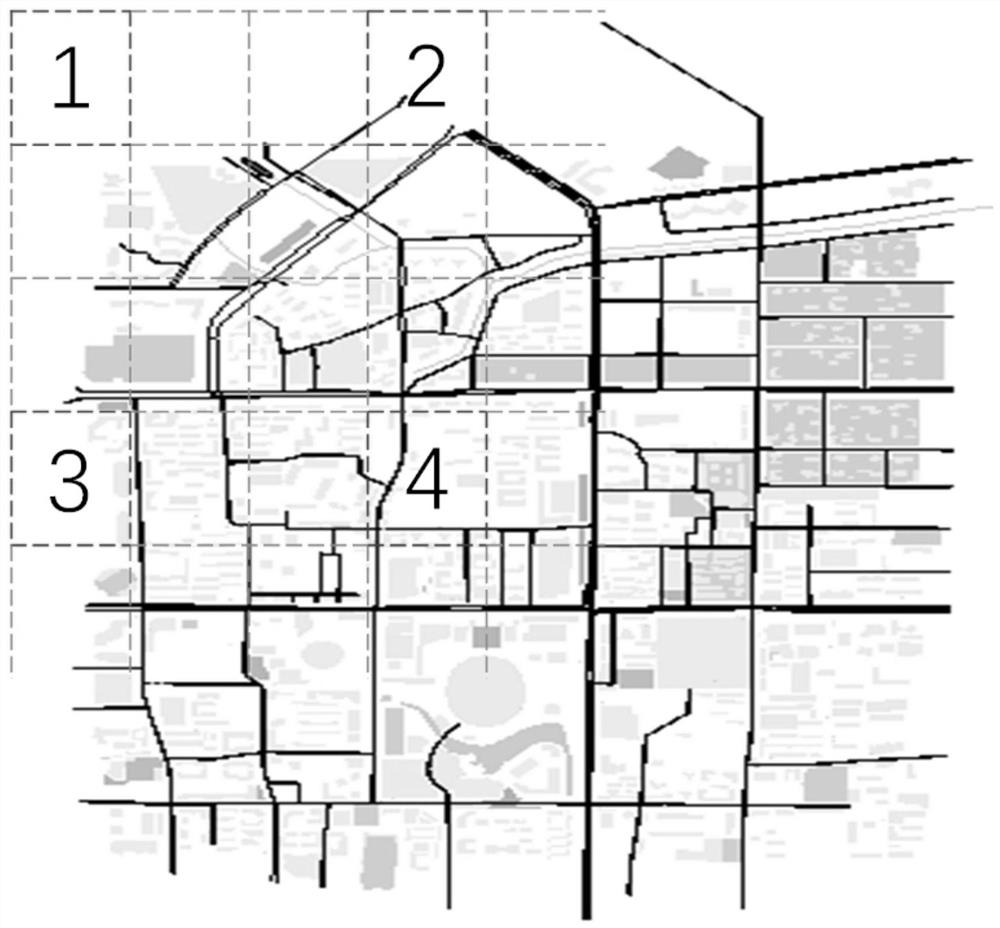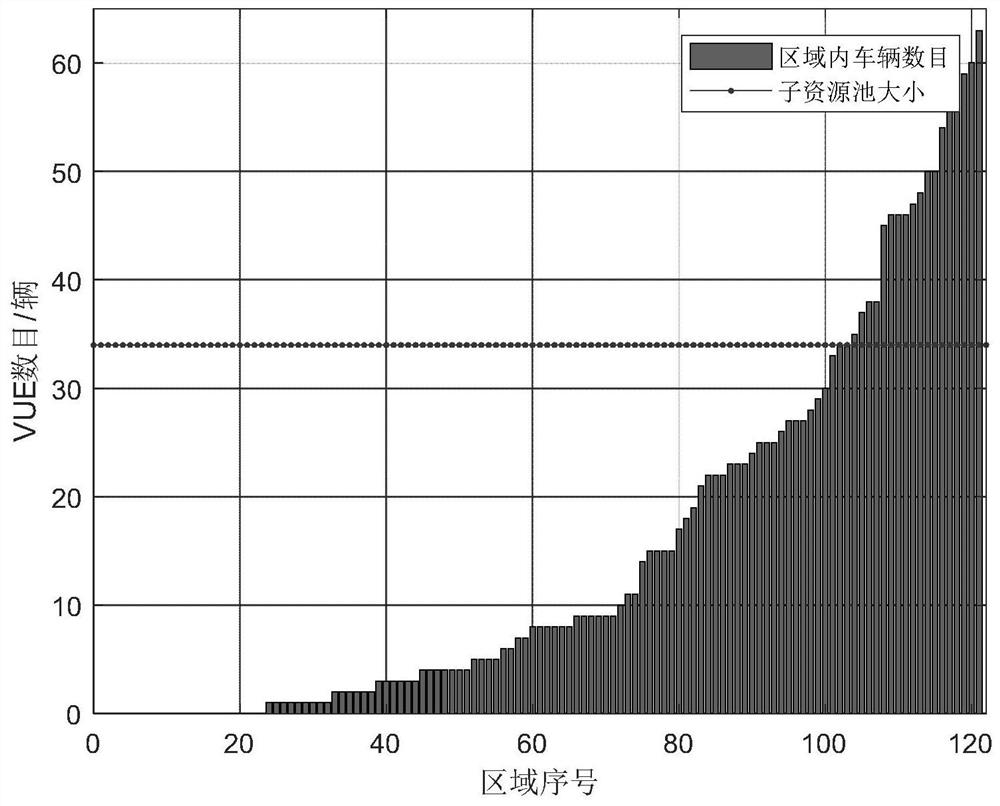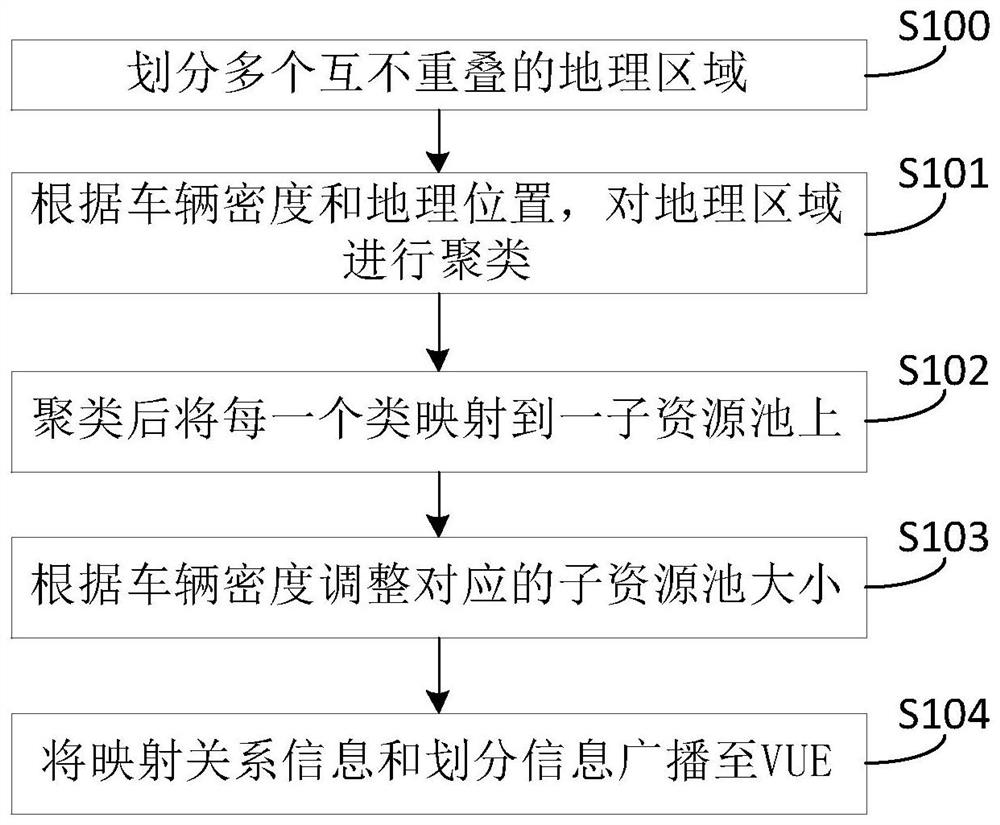Method, device and system for dynamic resource selection based on geographic location
A technology of geographic location and dynamic resources, applied in the field of Internet of Vehicles, can solve the problems of waste of resource blocks, reduce the reliability of communication systems, and resource shortages, reduce frequent collisions and idle resources, improve communication reliability, and improve resource utilization. rate effect
- Summary
- Abstract
- Description
- Claims
- Application Information
AI Technical Summary
Problems solved by technology
Method used
Image
Examples
Embodiment 1
[0047] The present invention designs a set of dynamic resource selection mechanism based on geographic location by using methods such as clustering and adjusting the size of sub-resource pools.
[0048] Embodiment 1 of the present invention provides a dynamic resource selection method based on geographic location, see image 3 shown, including steps:
[0049] Step S100, dividing the entire area within the coverage of the base station into multiple non-overlapping geographical areas.
[0050] The base station divides the entire area within its coverage area into a number of equal-area non-overlapping geographical areas. The size of each area should be smaller than the vehicle communication range. If the vehicle communication distance is α meters, then the distance of the longest diagonal of each area should be less than α meters. In general, α is 300 meters.
[0051] Step S101, according to vehicle density and geographic location, cluster all geographical areas within the c...
Embodiment 2
[0058] Embodiment 2 of the present invention provides a preferred embodiment of a dynamic resource selection method based on geographic location.
[0059] Step S200, dividing geographical regions.
[0060] The geographic area division in Embodiment 2 is the same as in Embodiment 1, and will not be repeated here.
[0061] Step S201, collect the number of VUEs in each area, group geographical areas with similar vehicle density and far distance into one category, and map each type of geographical area to a sub-resource pool.
[0062] The VUE within the coverage of the base station will report its location periodically, with a period of β milliseconds. The base station collects the location information to count the number of VUEs in each area. Here we define the number of VUEs in each area as the vehicle density in the area. Therefore, each area has two characteristics, the first is the vehicle density, that is, the number of VUEs, and the second is the location of the geograph...
Embodiment 3
[0084] The present invention also provides a dynamic resource selection device based on geographic location, which is installed on the side of the base station and used to divide the entire area within the coverage of the base station into multiple non-overlapping geographic areas; obtain the vehicle density of each geographic area According to the vehicle density and geographical location, cluster all geographical areas within the coverage of the base station; after clustering, each class is mapped to a sub-resource pool, forming a many-to-one from geographical area to sub-resource pool Mapping; adjust the size of the corresponding sub-resource pool according to the vehicle density of each class after clustering; broadcast the mapping relationship information of the many-to-one mapping and the adjusted corresponding sub-resource pool division information to the VUE.
PUM
 Login to View More
Login to View More Abstract
Description
Claims
Application Information
 Login to View More
Login to View More - R&D
- Intellectual Property
- Life Sciences
- Materials
- Tech Scout
- Unparalleled Data Quality
- Higher Quality Content
- 60% Fewer Hallucinations
Browse by: Latest US Patents, China's latest patents, Technical Efficacy Thesaurus, Application Domain, Technology Topic, Popular Technical Reports.
© 2025 PatSnap. All rights reserved.Legal|Privacy policy|Modern Slavery Act Transparency Statement|Sitemap|About US| Contact US: help@patsnap.com



